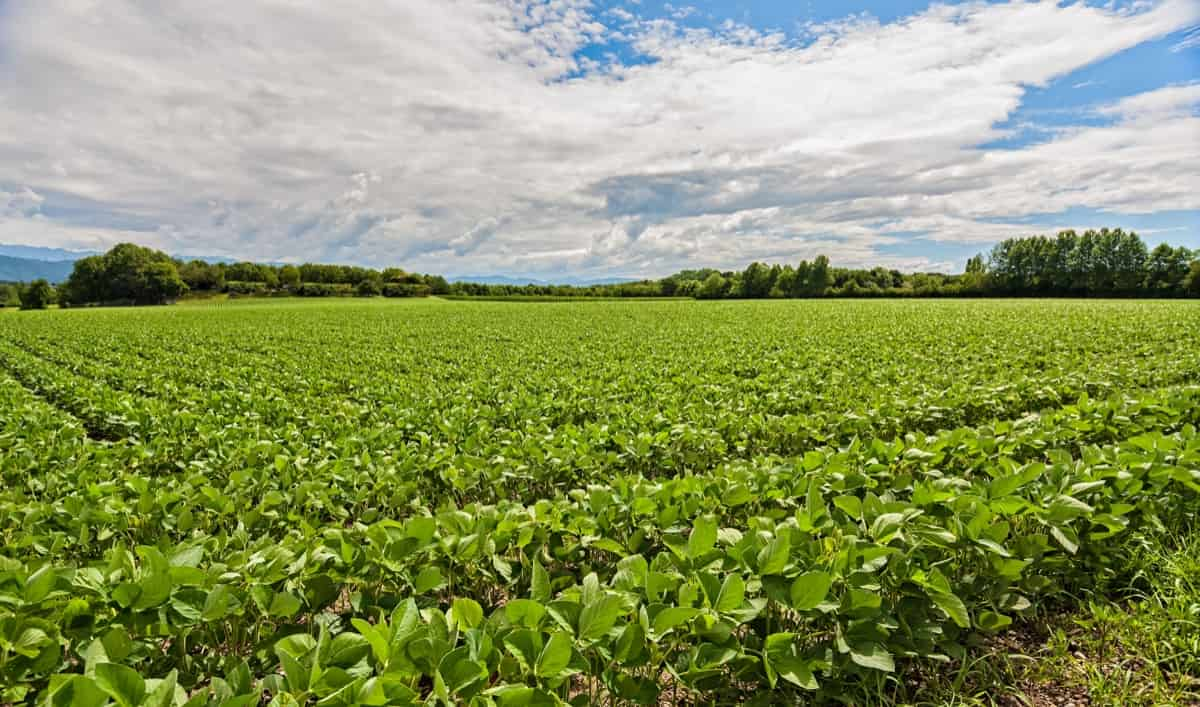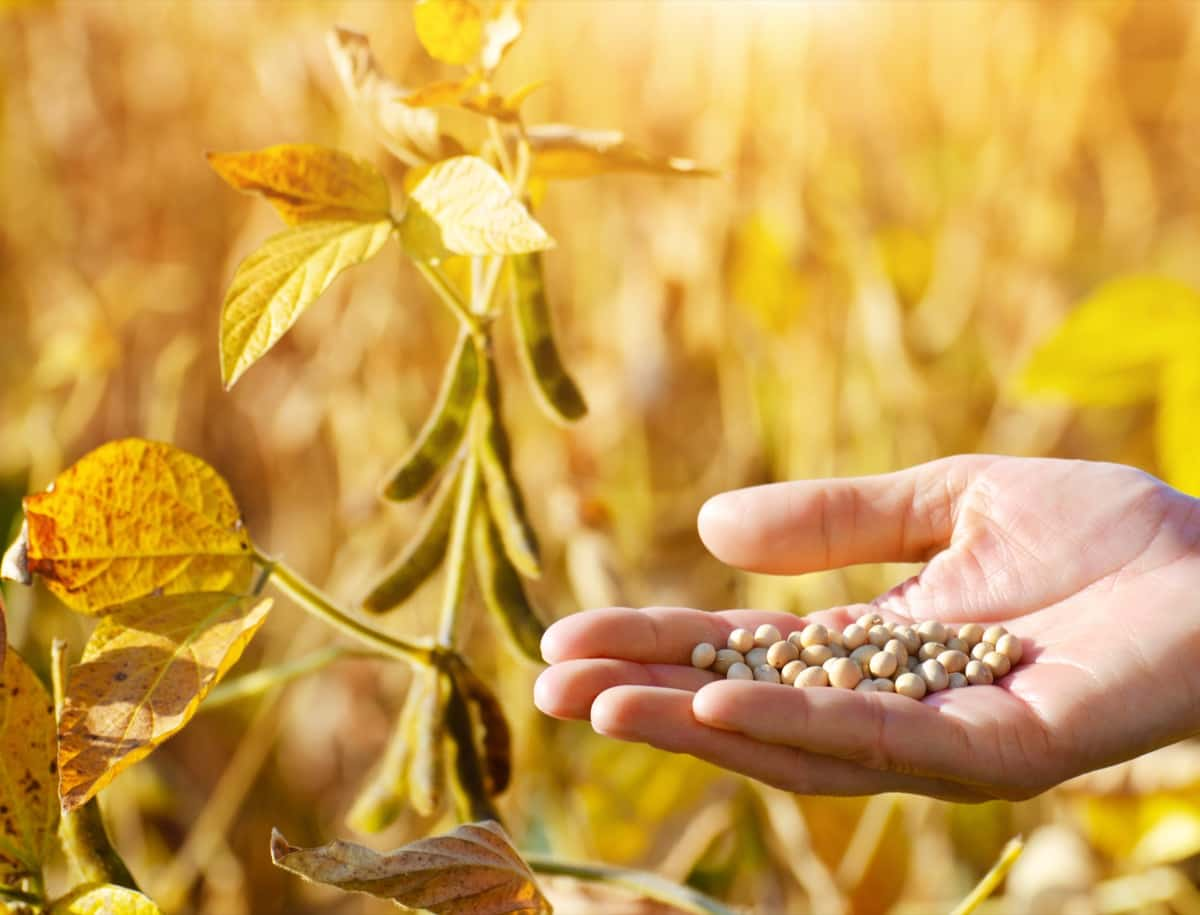Soybean farming is a lucrative and rewarding venture in Minnesota, a state that consistently ranks among the top soybean-producing states in the United States. The success of soybean farming in Minnesota can be attributed to its favorable climate, fertile soil, and well-established agricultural practices. Below we learn about the step-by-step process of starting a soybean farm in Minnesota, from selecting the right land to planting, managing pests and diseases, and harvesting your soybeans.

How to Start Soybean Farming in Minnesota
Understanding Minnesota’s Climate for Soybean Farming
Minnesota’s climate is classified as continental, characterized by warm summers and cold winters. The state experiences a growing season that typically lasts from mid-May to mid-September, offering a suitable window for soybean cultivation. Soybeans thrive between 60°F and 90°F, and Minnesota’s average summer temperature of 70°F creates an ideal environment for soybean growth.
Rainfall is another crucial factor for soybean farming. Minnesota receives an average annual precipitation of 20 to 35 inches, with most rainfall occurring during the growing season. This ample moisture helps meet soybean water requirements ranging from 15 to 25 inches of water throughout the growing season. However, excessive rainfall can cause waterlogging and disease issues, so proper drainage is essential.
Selecting the Right Land and Soil
Choosing the right land is a critical first step in starting a soybean farm. Soybeans grow well in well-drained, fertile soils with a pH range of 6.0 to 6.8. Waterlogged soils promote root rot and other diseases, so it’s best to steer clear of flood-prone places. If possible, select a site with a history of successful soybean cultivation to ensure the soil has the necessary nutrients.
Preparing the Soil
Before planting, prepare the soil by testing it to determine nutrient levels and pH. Based on the test results, apply the necessary amendments, such as lime, to adjust the pH and fertilizers to provide the required nutrients. Soybeans need adequate nitrogen, phosphorus, and potassium levels for optimal growth. Till the soil breaks up compaction and creates a smooth seedbed. Avoid over-tilling, which can lead to soil erosion and loss of soil structure. Consider using conservation tillage practices, such as no-till or reduced-till, to maintain soil health and minimize erosion.
Soybean Growth Stages
Understanding the different growth stages of soybeans is essential for successful cultivation. Soybean growth is divided into two main categories: vegetative (V) and reproductive (R) stages. The vegetative stages are numbered from V1 to V6, while the reproductive stages range from R1 to R8.
- V1 to V6 – Vegetative Stages: These stages focus on the development of the plant’s leaves, stems, and roots. The growth begins with the first true leaf (V1) emergence and continues until the sixth trifoliate leaf (V6) appears.
- R1 to R8 – Reproductive Stages: The reproductive stages start with the onset of flowering (R1) and end with full maturity (R8). During these stages, the plant forms flowers, pods, and seeds. Understanding these stages helps you make informed decisions on irrigation, pest management, and other cultivation practices.
Selecting the Right Soybean Variety
Choose a soybean variety well-adapted to Minnesota’s climate and resistant to common pests and diseases. Consider factors such as maturity group, yield potential, disease resistance, and herbicide tolerance when selecting a variety. Two popular soybean varieties suitable for Minnesota are the SCS 9204RR2Y, known for its high yield potential and excellent standability, and the MN1023R2Y, a variety with strong disease resistance and adaptability to varying soil conditions.
Planting and Soybean Plant Spacing
Plant soybeans in Minnesota when soil temperatures reach a consistent 50°F, typically around mid-May. Planting too early can expose seeds to cold and wet conditions, reducing germination and increasing the risk of seedling diseases. Soybean plant spacing is crucial for optimal growth and yield. A recommended plant population for Minnesota is 150,000 to 200,000 plants per acre.
In case you missed it: How to Start Soybean Farming in Illinois: A Step-by-Step Production Guide for Planting to Harvest

To achieve this, use a seeding rate of 200,000 to 240,000 seeds per acre, accounting for potential losses during germination and emergence. Space the rows 7.5 to 30 inches apart, with a narrower row spacing generally resulting in higher yields. Within the rows, space the seeds 1 to 1.5 inches deep and 2 to 3 inches apart.
Managing Weeds, Pests, and Diseases
Integrated pest management (IPM) is a vital component of soybean farming. Cultural, mechanical, biological, and chemical pest management strategies decrease pest populations and agricultural loss.
Weed management: Select a soybean variety with good canopy closure to suppress weed growth. Use pre-emergence and post-emergence herbicides to control weeds, ensuring you follow the label instructions to avoid herbicide resistance development. Employ mechanical methods, such as cultivation or mowing, to manage weeds when necessary.
Insect pest management: Scout your fields regularly to monitor insect populations and identify potential issues. Use economic thresholds to determine when insecticide applications are warranted. Consider using insect-resistant soybean varieties and releasing beneficial insects to control pests biologically.
Disease management: Plant disease-resistant soybean varieties and practice crop rotation to minimize disease pressure. Monitor your fields for symptoms and take action when necessary. Use fungicides judiciously and according to label instructions to manage diseases effectively.
Irrigation and Fertility Management
Soybeans require adequate moisture throughout the growing season, with the most critical period being during the reproductive stages. If rainfall is insufficient, supplemental irrigation may be necessary. Use soil moisture sensors and evapotranspiration data to schedule irrigation events and prevent water stress.
Fertility management is crucial for optimal soybean growth and yield. Applying the required nutrients through fertilizers or manure based on soil test results. Soybeans require nitrogen-fixing bacteria to convert atmospheric nitrogen into a form the plants can use. Inoculate seeds with the appropriate strain of bacteria if your field has no history of soybean cultivation or if the bacteria population is low.
Harvesting
Soybeans are ready for harvest when they reach the R8 (full maturity) stage, with a moisture content of around 13-15%. Harvesting at the proper moisture content minimizes yield loss due to shattering and ensures optimal quality. Use a combined harvester with a flex header to efficiently harvest the soybeans.
Post-Harvest Management
After harvesting, clean and dry the soybeans to a 12-13% moisture content for safe storage. Store the soybeans in well-ventilated, moisture-proof facilities to prevent mold growth and maintain quality.
In case you missed it: How to Start Soybean Farming in Iowa: Ultimate Guide for Soil Preparation to Harvest

Conclusion
Soybean farming in Minnesota can be rewarding when the right steps are followed, from selecting suitable land and soybean varieties to managing pests, diseases, and soil fertility. By adhering to the guidelines outlined in this guide, you can successfully establish a thriving soybean farm and reap the benefits of this valuable crop.
- Feed Your Flock for Less: Top 10 Tips to Save on Chicken Feed
- Ultimate Guide to Ossabaw Island Hog: Breeding, Raising, Diet, and Care
- Hatching Answers: The Top 10 Reasons Your Chickens Aren’t Laying Eggs
- Eggs and Economics: Breaking Down the Cost of Raising Backyard Chickens
- Defend Your Greens: Proven Methods to Keep Iguanas Out of Your Garden
- Ultimate Guide to Cinnamon Queen Chicken: A Comprehensive Guide for Beginners
- Ultimate Guide to California Tan Chicken: Breeding, Raising, Diet, Egg-Production and Care
- Ultimate Guide to Marsh Daisy Chicken: Breeding, Raising, Diet, and Care
- 10 Types of Chicken Farming Businesses You Can Start for Profits